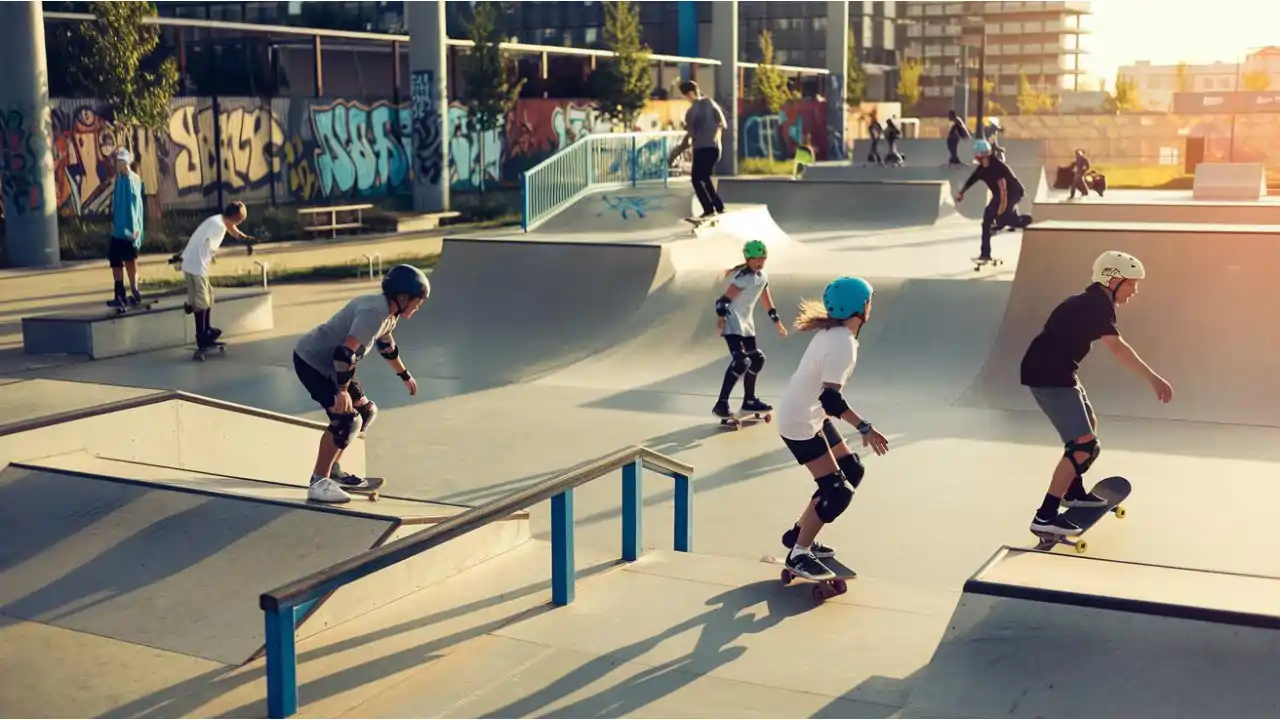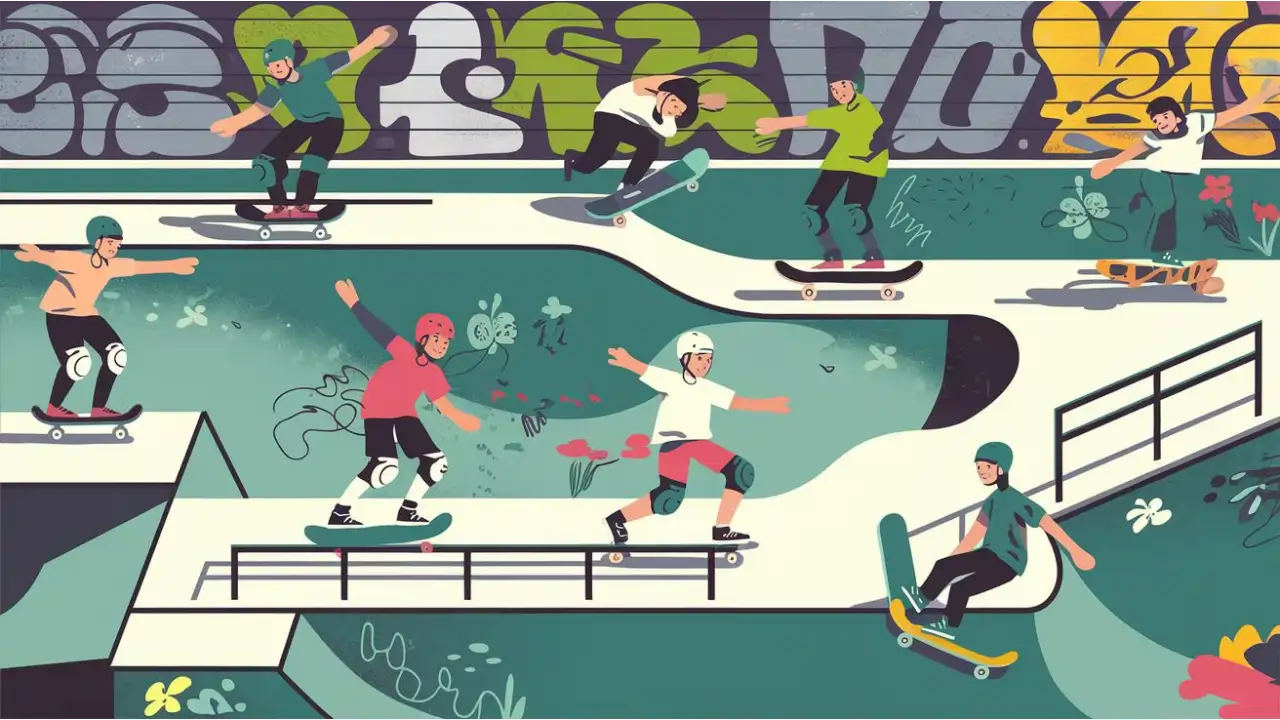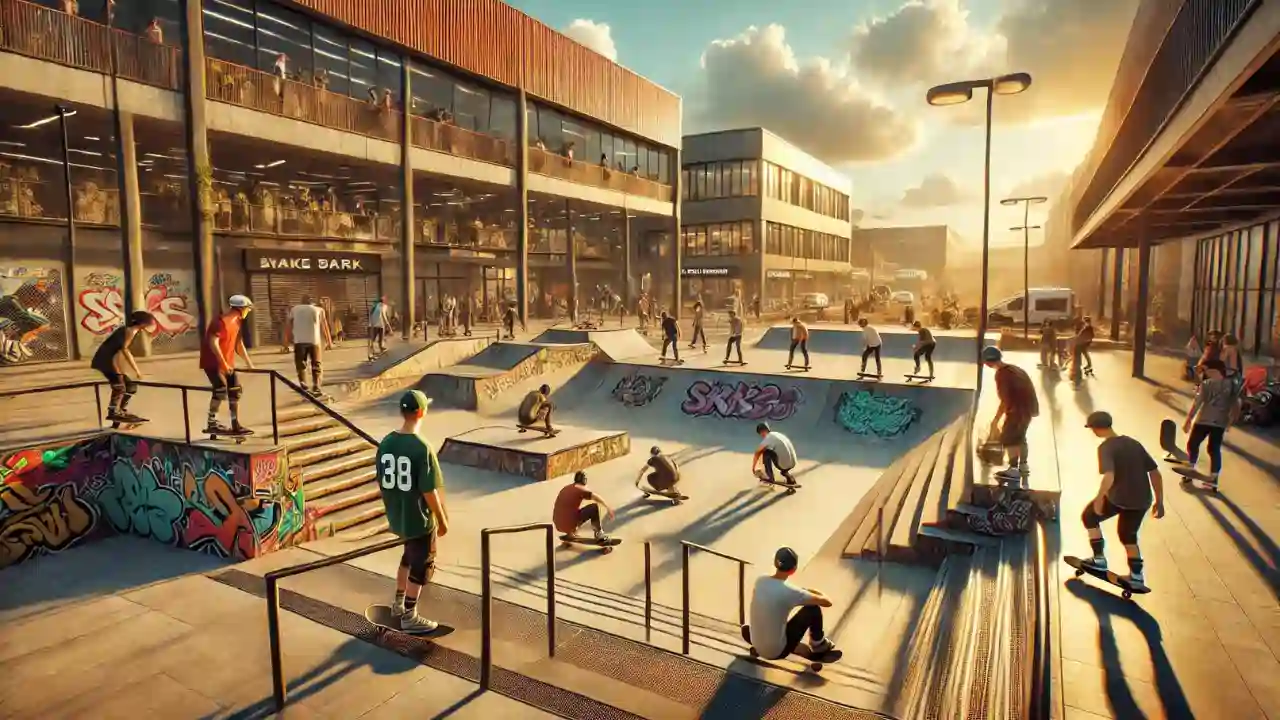Top 10 Skate Park Etiquette Tips Every New Skater Must Know

All levels of skaters gather in skate parks to practice and showcase their tricks. There is mutual respect and cooperation in skate parks, regardless of whether you are a beginner or an experienced pro. To ensure that everyone enjoys these parks safely and efficiently, it is essential to understand and follow basic skate park etiquette.
The following skate park etiquette helps skaters focus on improving their skills without unnecessary distractions or conflicts. In this guide, new skaters will learn to navigate skate parks like pros, blend in with the crowd, and respect others’ space and time. By following these simple guidelines, new skaters can gain confidence, avoid accidents, and become welcome members of the skateboarding community.
Table of Contents
1. Know the Flow
Skaters navigate skate parks without bumping into each other by following an unspoken traffic flow. Keeping the environment safe and fun for everyone requires understanding and respecting this flow. A skater typically moves in a specific direction around a park, whether around a bowl, along a ramp, or across an obstacle. Observe how other skaters are using the space before you jump into the mix.
Observe how they line up to take turns on obstacles and try to determine the general movement patterns. If you want to join in, wait for a clear opening after you’ve observed. Avoid unnecessary collisions by staying aware of your surroundings. Be aware of where others are skating, and ensure you don’t block their path. By blending into the park’s flow, you will be able to provide everyone with a smooth experience.
2. Wait Your Turn
Waiting your turn is one of the most essential skate park rules. Practicing patience at skate parks is important, especially during peak hours. It can be frustrating and even dangerous to jump ahead of others or cut in line when you’re eager to try a new trick. As long as skaters respect the order of skaters, everyone will get a fair chance to use the park’s obstacles.
Listening to who’s next and letting them go before stepping in is helpful when waiting your turn. It is common for skaters to take turns hitting ramps or obstacles at skate parks, and respecting this flow keeps things running smoothly. Cutting in or rushing others can cause tension and conflicts in the park. You can contribute to a positive and respectful environment by patiently waiting and giving other skaters space.
3. Don’t Snake
“snaking” refers to cutting in front of another skater as they approach an obstacle or line. It is one of the most common causes of frustration and accidents at skate parks. When you’re about to drop into a trick, someone zooms in from the side, disrupting your flow. In addition to being inconsiderate, it’s potentially dangerous for both skaters.
Keep an eye on the flow of the park and understand who is next in line for a particular obstacle to avoid snaking. The skate park usually runs smoothly when skaters respect an unspoken order. You can observe if you are still determining whether it is your turn. When you’re okay to skate, most skaters will give you a quick nod or signal.
This unwritten rule makes the park a more enjoyable place for everyone. When you accidentally snake someone, a quick apology can help. Over time, you’ll develop a natural feel for the park’s rhythm and avoid disrupting others. By not snaking, you’ll build positive relationships with fellow skaters.
4. Respect All Skill Levels

Skate park etiquette emphasizes respecting skaters of all skill levels. For beginners as well as seasoned pros, skate parks are community spaces. If you’re a new skater, you’ll meet people at varying stages of their skateboarding journey, and you should remember that everyone started as a beginner.
Encouraging a Positive Atmosphere:
Take inspiration from more experienced skaters rather than feeling intimidated by them. Most seasoned skaters are happy to give tips or advice if asked politely. Try to foster a positive, encouraging environment, even if you’re more experienced than others. Skaters should support one another to create a welcoming community, especially those just starting.
Avoid Being Critical:
The pace is leisurely, but being overly critical of others’ skills can ruin the atmosphere. Show patience and understanding instead. No one wants to be harshly judged while practicing, and everyone has their learning curve. Offering a nod of encouragement can boost a beginner’s confidence.
Help Where Possible:
When you notice someone struggling, kindly offer help. A quick tip or word of encouragement can make someone’s day and help them progress more quickly. Respecting all skill levels fosters a supportive community where everyone feels welcome, whether mastering their first ollie or landing complex tricks.
5. Keep the Park Clean
Skate parks are public spaces for everyone to enjoy; part of that enjoyment is keeping them clean and trash-free. Picking up after yourself is an easy way to show respect for the park and the people who use it. When finishing a snack, opening new gear, or taking a break with a drink, always dispose of trash properly in the provided bins. Take your garbage with you until you can dispose of it in an appropriate location if there are no trash bins nearby.
Litter is an eyesore and can pose a hazard to skaters. Tripping or falling can be increased by small objects on the ground, such as cans, plastic wrappers, or bottles. Keeping the park clean helps prevent accidents and keeps everyone safe.
Furthermore, picking up trash you didn’t leave behind helps foster a positive community. It sets an excellent example for others and shows you care about the environment. Maintaining a clean environment contributes to skateboarding culture’s sense of community and respect.
6. Don’t Overstay in a Spot
Skate park etiquette includes sharing the space, especially regarding popular obstacles. Getting caught up in practicing a new trick or feeling close to nailing a trick is easy when you’re a new skater. Skate parks are communal spaces, and other skaters are likely waiting to use the same ramps, rails, and boxes.
After a few attempts, step aside if you find yourself repeatedly trying the same trick in the same spot. You don’t have to give up on your session; just be mindful of how long you’re taking up space. Step back, take a break, watch others, and try again.
Keeping the park’s flow and making things fun for everyone requires being mindful of others. Take note of how long you’ve been riding a popular feature like a quarter pipe or a flat rail. Step aside for a while if a crowd is forming or people are waiting. As a result, cooperation and respect are maintained in the park.
7. Be Respectful of Personal Space
Skate parks often have skaters practicing tricks, waiting for their turn, and watching others. You must respect the personal space of those around you to ensure a smooth and enjoyable experience. Skaters often make the mistake of standing too close to obstacles or skate areas where others are actively skating. In the case of an unexpected fall or loss of control, this can distract the skater and lead to an accident.
It is essential to have standing ramps, rails, and other obstacles when waiting. When waiting for your turn, observing other skaters’ paths, or standing in areas where skaters frequently pass through, avoid blocking. Look for designated areas or ask more experienced skaters where it is safe to stand.
Give someone enough space to focus before they attempt a trick. Don’t crowd them or hover too close, making them uncomfortable or pressured. The last thing you want is to distract someone at a crucial moment while skating.
8. Mind Your Volume
A skate park is a communal space where skaters of all ages and abilities congregate. It’s natural to get excited, especially when you land a trick, but being mindful of your environment is crucial. Maintaining a reasonable volume for conversations and music shows respect for others trying to concentrate on skating. When skaters attempt challenging maneuvers, loud talking, shouting, or blasting music can distract them and affect their focus.
If you enjoy listening to music while skating, consider using earbuds or keeping your speaker’s volume low. This way, you can enjoy your tunes without imposing your tastes on others. Also, keep the atmosphere enjoyable by being mindful of how loud you are when celebrating successes or talking to friends.
9. Help When Needed
Supporting fellow skaters is one of the best ways to foster a positive skate park environment. It is common for skaters to fall, especially when learning new tricks or practicing complex maneuvers. A little encouragement or help can go a long way if you see someone struggling with a trick or falling. Simply asking, “Are you okay?” You’ll get it next time!” can boost someone’s confidence and create a more inclusive atmosphere.
In addition to offering verbal encouragement, physical assistance may be needed. For example, if someone takes a hard fall and drops their board, offering to pick it up or help them move out of the way can prevent further accidents. However, always gauge the situation before intervening, as some skaters may prefer to handle things independently. It’s important to respect their boundaries.
10. Wear Protective Gear
New skaters should wear protective gear when entering a skate park. Besides protecting you from serious injuries, it also sets a positive example for others, especially beginners. Even the most experienced skaters can fall or suffer an accident while skateboarding. New skaters must still learn to control their boards and execute tricks by wearing helmets, knee pads, elbow pads, and wrist guards.
Helmets are the most essential protective gear, especially when preventing head injuries. If you fall hard without wearing a helmet, you can suffer a concussion or even more severe injuries. Knee and elbow pads help cushion falls and prevent painful scrapes when learning tricks or cruising around the park. Skaters break falls with their hands, so wrist guards are equally important, making their wrists more susceptible to fractures and sprains.
Conclusion about Skate Park Etiquette

Proper skate park etiquette is essential for a safe, respectful, and enjoyable environment. The following guidelines will help you avoid conflicts and accidents while fostering a positive community, whether a beginner or an experienced skater. You can help create an inclusive atmosphere by respecting the flow of the park, waiting your turn, wearing protective gear, and being mindful of others.
While skateboarding is about self-expression and having fun, it is also about looking out for others and sharing the space responsibly. These simple tips will improve your skating experience and build friendships and mutual respect. It is everyone’s responsibility to keep skate parks safe and welcoming. skate park etiquette isn’t just about following rules; it’s about being part of a community that values respect, growth, and enjoyment.
FAQs on Skate Park Etiquette
1. Why is skate park etiquette important?
If skate park etiquette is followed, everyone can enjoy skate parks safely and respectfully. Regardless of skill level, all skaters can enjoy the park without conflicts or accidents. Following these etiquette guidelines allows everyone to feel welcome and progress at their own pace, fostering a positive community atmosphere.
2. What does “snaking” mean in skateboarding?
Skaters who snake often cause accidents or frustration when they cut in front of someone else’s turn. To avoid disrupting the skate park’s flow, you should wait your turn and be aware of others.
3. Should beginners wear protective gear at the skate park?
Beginners should always wear protective gear, such as helmets, kneepads, and wrist guards. You can get seriously injured in skate parks, so wearing protective gear can help you avoid serious injuries.
4. How can I tell which way the flow of the skate park is going?
It would help if you took a moment to observe the other skaters before jumping in. Observe their approach to obstacles and their direction. Following the unspoken flow of most parks is essential to avoid collisions.
5. What should I do if I’m nervous about skating around more experienced skaters?
If you’re nervous, skate in less crowded areas or off-peak hours when the park is quieter. Don’t be afraid to ask questions when you’re unsure about something. Watching more experienced skaters can also be helpful for learning.
